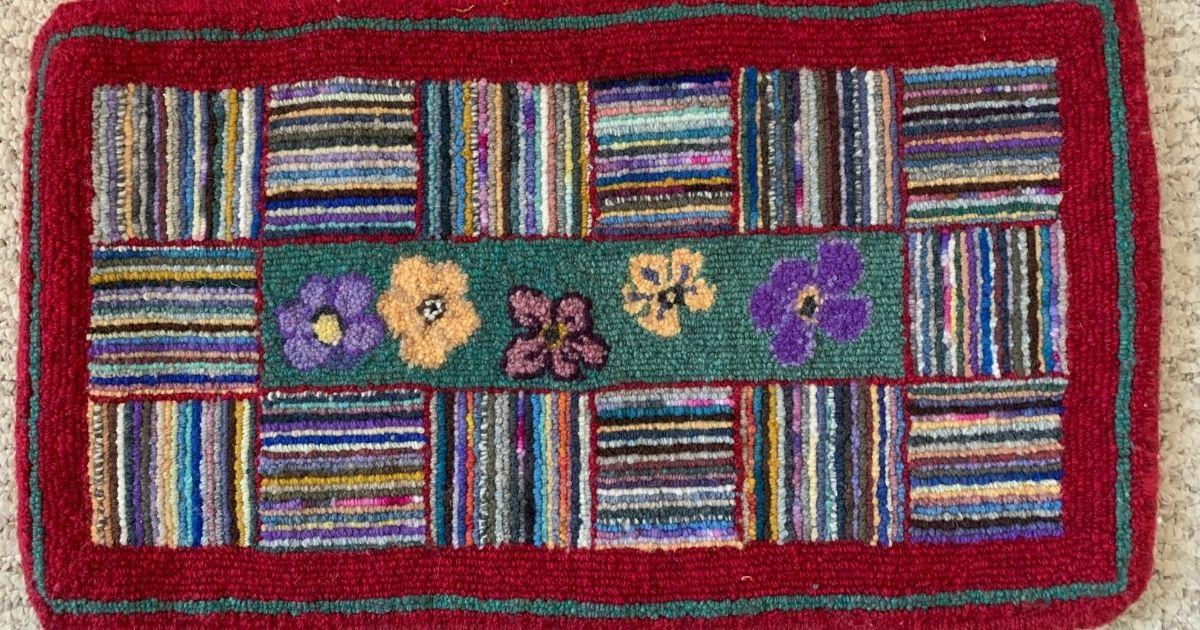Rug hooking has been my favourite craft for as long as I can remember. I’ve always tried to take in exhibitions and openings that feature textile artists, and I’ve long had the habit of strolling through the fabric store, touching all the soft and expensive yarns wistfully. (Remember when we could touch everything without fear of infection? Good times.)
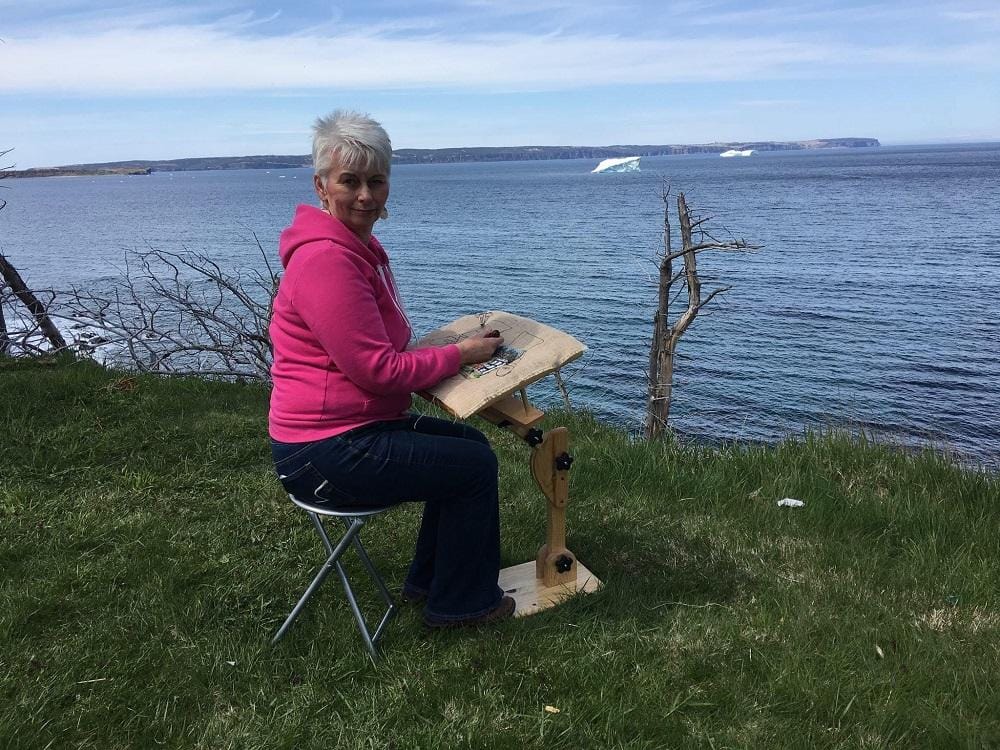
Like many of us in the pre-COVID-19 world, I was too busy rushing from one meeting to the next. I sit on boards, do freelance writing and own a small catering business. I take on part-time contracts with different non-profit organizations. There was no time, I told myself, to learn something new.
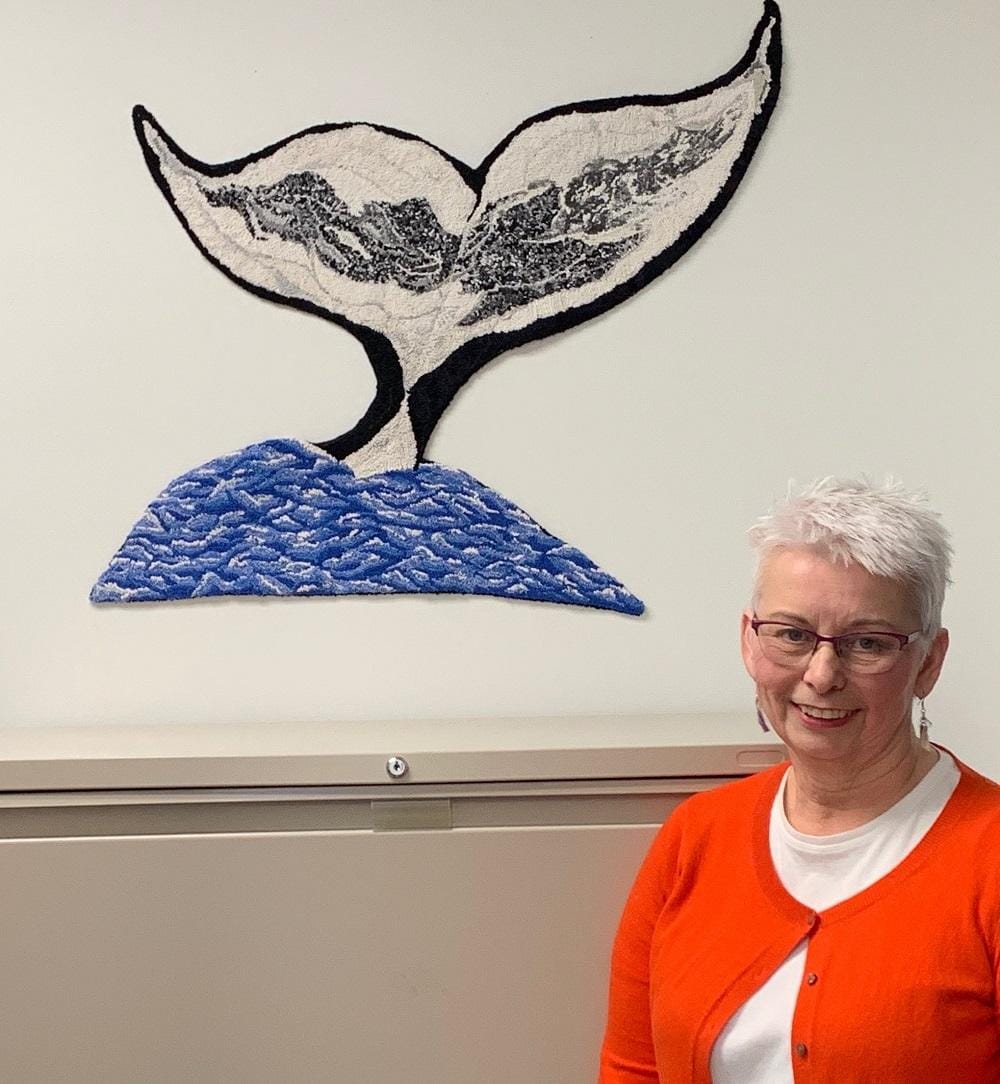
In March, when my business closed and everyone began hoarding toilet paper and buying large amounts of Lysol, I ordered two beginner rug kits from a local Newfoundland maker. The kits contained linen pulled tightly over a frame, a pattern, pre-measured yarn in a rainbow of colours, and a small hook. Within a week, I was hooked.
Rug hooking is an art form where rugs or wall hangings are made by pulling yarn or fabric through a stiff woven base. It’s a craft that came to Newfoundland from poverty and economy.
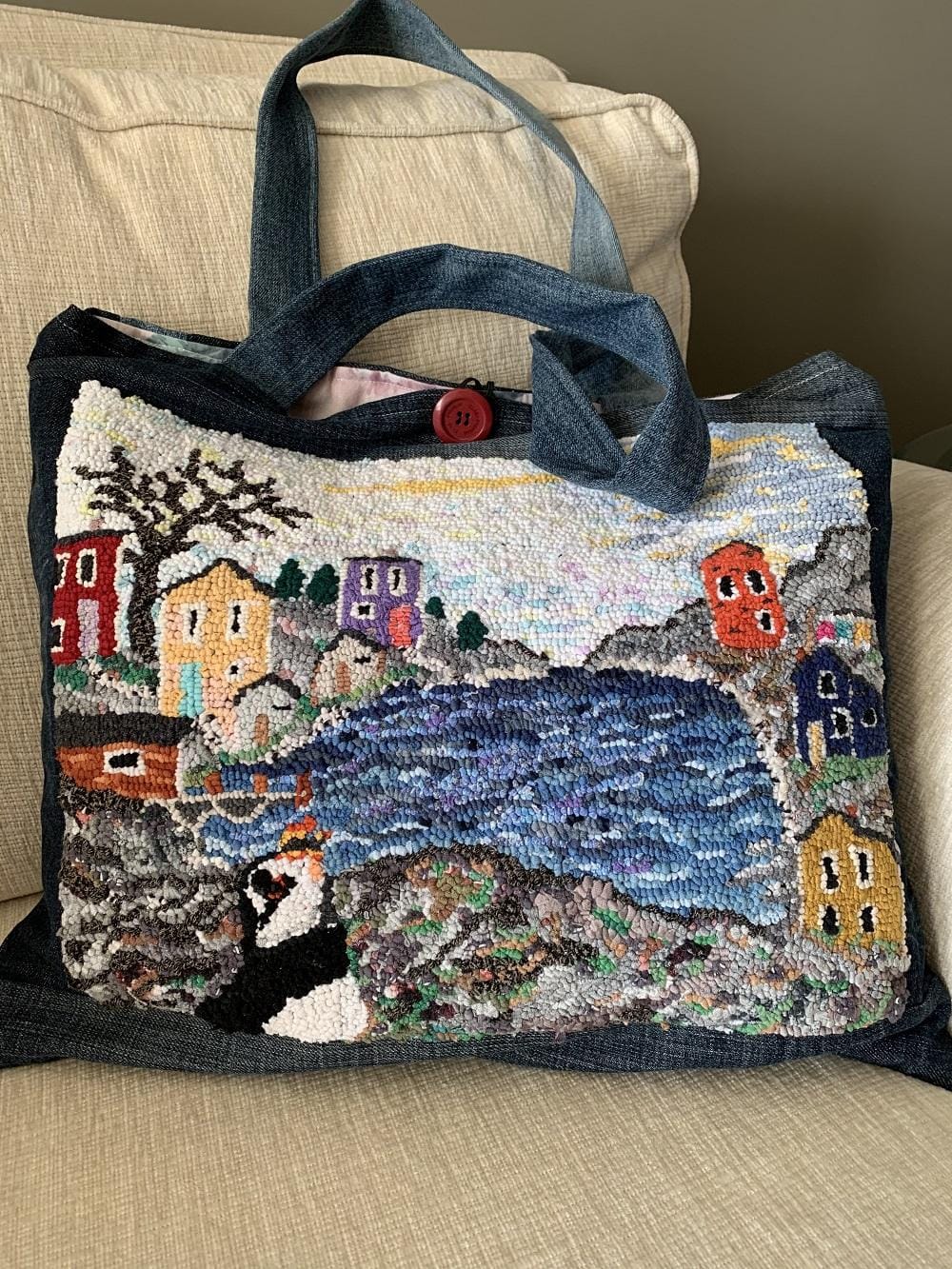
More specifically, European floor coverings of the 1800s were expensive, and only the richest merchant settlers and ship builders of St. John’s could send away for them. The rest of those early colonists, with the wolf at their door and the cold creeping in, made by using household rags or scraps of fabric, weaving these materials to make rugs they could not afford to buy.
Winnie Glavine, the social media director of the Rug Hooking Guild of Newfoundland and Labrador, maintains that rug hooking wasn’t taught at the finishing schools in St. John’s. Instead, evidence suggests that rug hooking was a bayman’s craft. (For those who don’t know, Newfoundlanders usually self-identify into two categories: “townie,” referring to someone from St. John’s, and “bayman,” referring to anyone born or living in one of the coastal outport communities.)
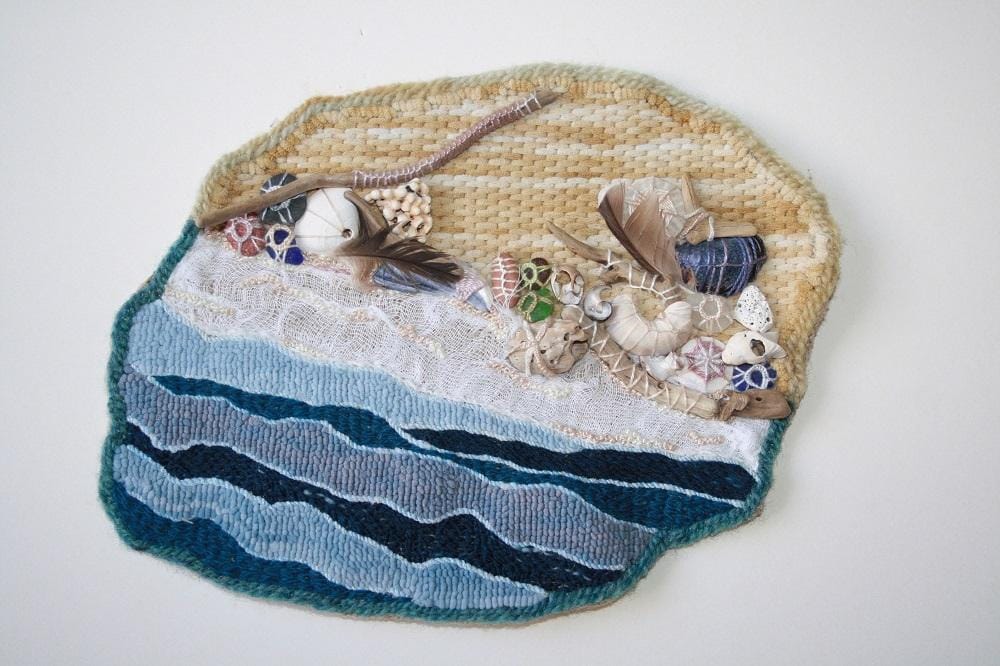
“Oh, the finishing schools taught ladies how to set a table and how to embroider, but if someone in St. John’s wanted a rug, they either asked a bayman to make it or they sent away for one,” says Glavine with a laugh. Rug hooking has a long tradition in Newfoundland and can be traced back to the 17th century. While it seems to have come from England and Ireland, its exact origins as a craft are difficult to trace, since both women’s history and the history of the working class is not well documented.
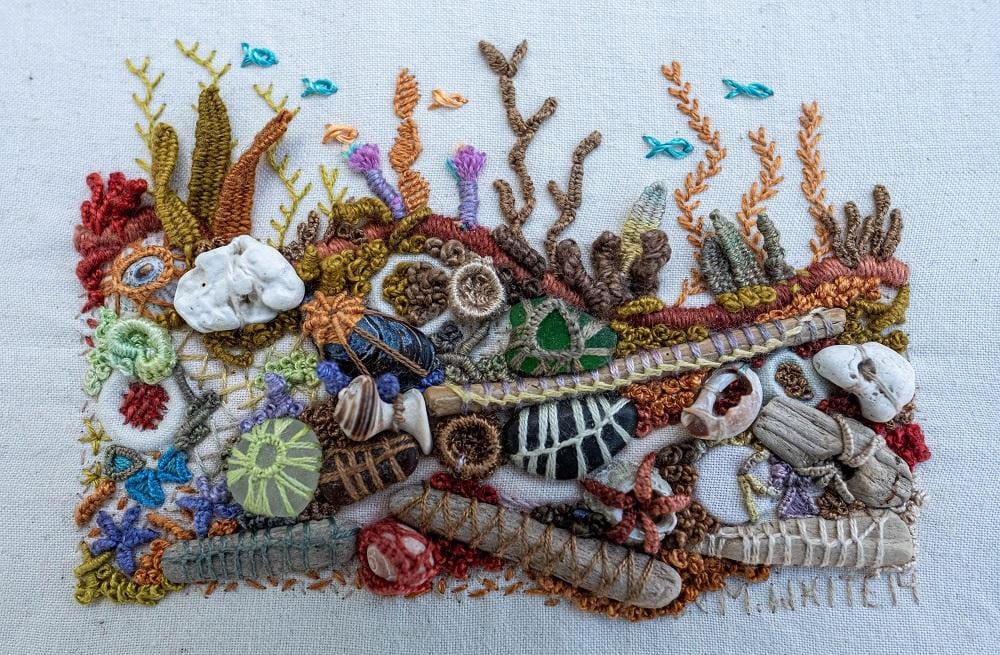
The Rug Hooking Guild of Newfoundland and Labrador has some examples of mats that are over 100 years old. Glavine describes their heritage, saying, “These mats were made to be used; they weren’t hangings for the wall. They were tread on and placed in front of the fire. It really shows us just how these mats were made to last.” Some of the popular patterns were simple blocks, flags or Bible verses. Folks also made what they saw in their backyards. There are many examples of rugs featuring fishing boats, whales or bright saltbox houses.
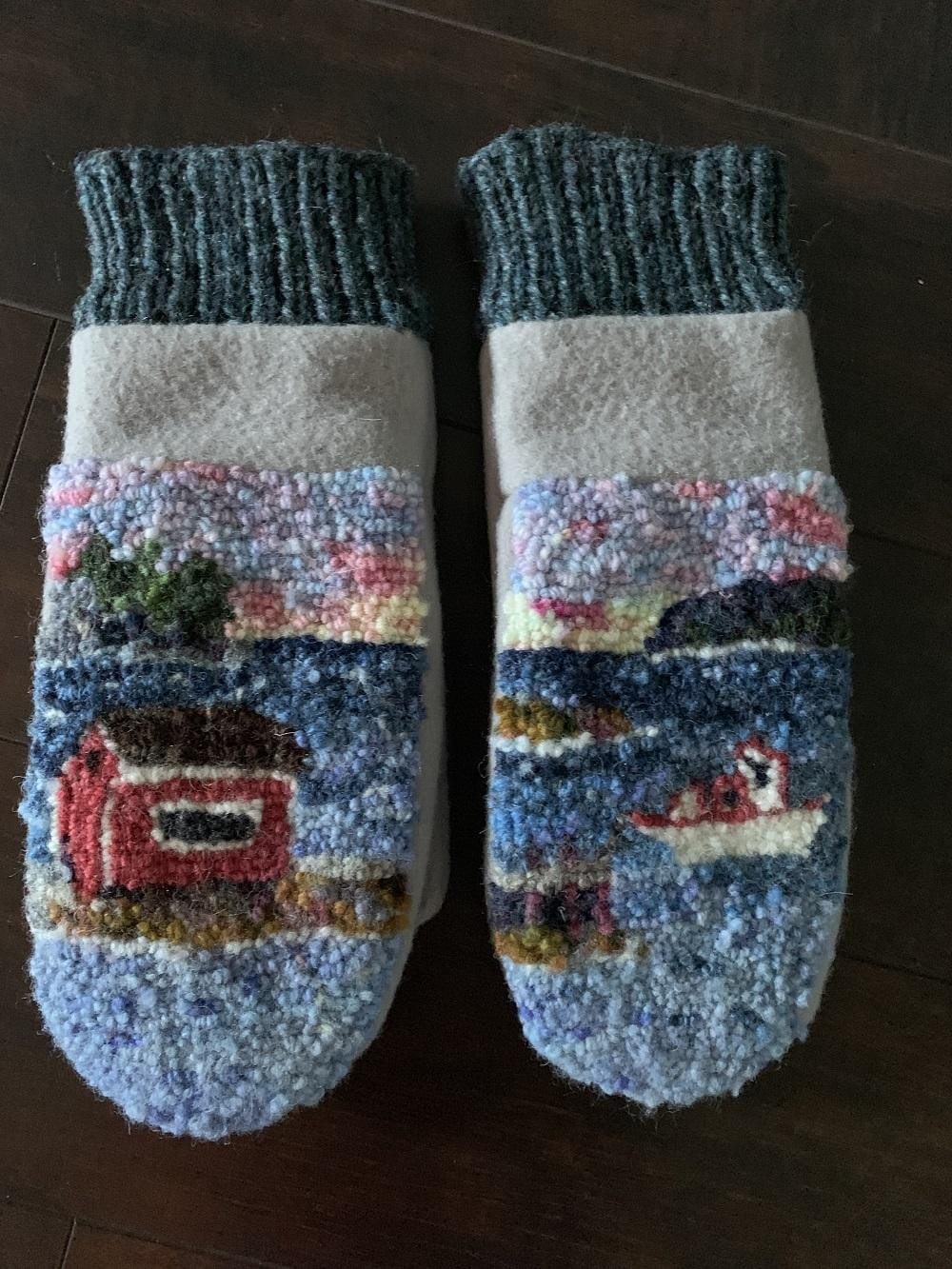
“Another thing that happened frequently is that someone from the community would leave the island to work on the mainland and bring back a pattern from a city that would then get shared among the women in the community. Each woman might make the pattern a little differently, putting their own spin on it. The Sidewalks of New York pattern is a great example of this,” says Glavine, who also owns Hooked Creations, a small business in Paradise, Newfoundland, that focuses on selling pieces of hooked art and patterns, repairing and restoring older mats, and teaching rug-hooking classes.
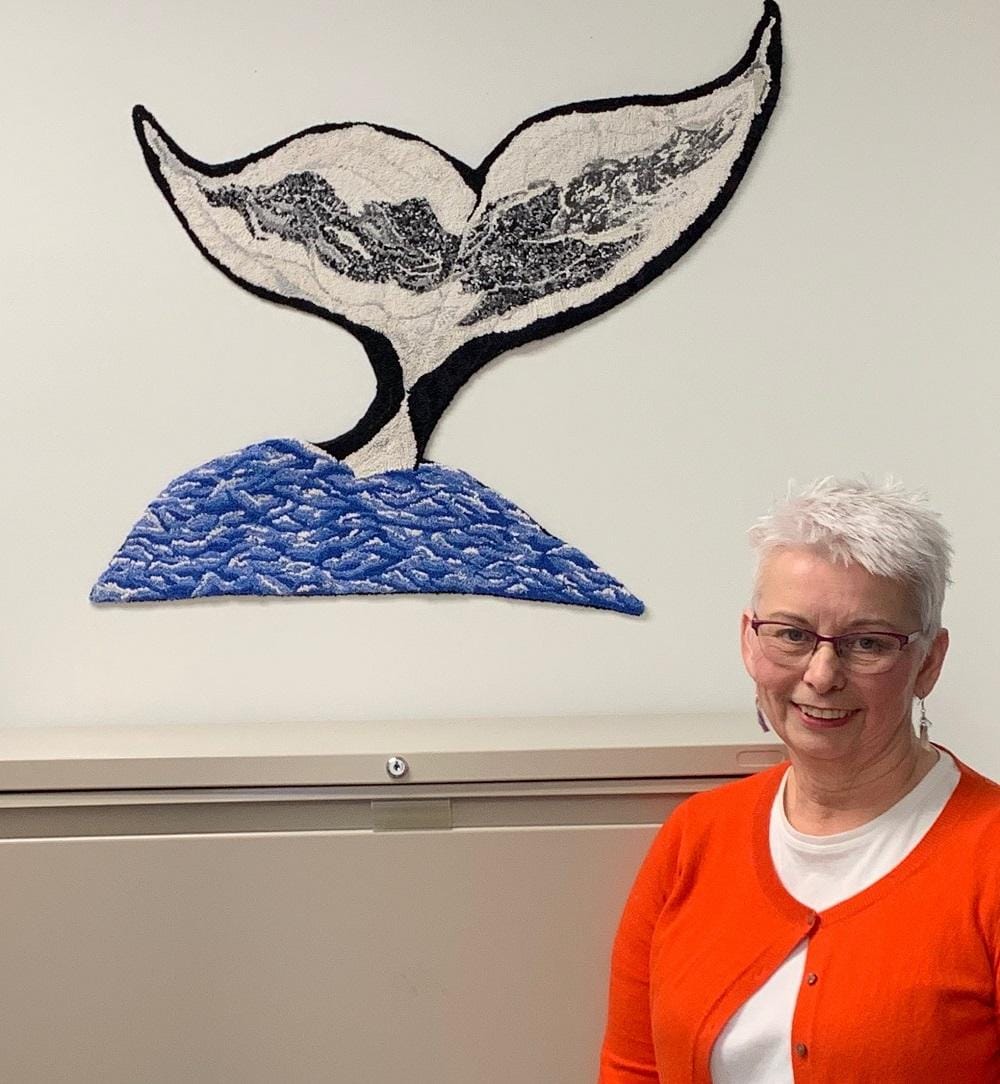
Glavine tried to convince her grandmother to teach her the art form in the 1970s, but by that time rug hooking had gone out of fashion and was in danger of fading away. Her grandmother refused to teach her, stating, “That’s work. You don’t want to learn that.” Glavine recalls that older folks encouraged their young family members to buy rugs from department stores and to move away from tasks like rug hooking.
Finally, Glavine learned how to rug-hook from a rug-hooking workshop in the early 1990s. She joined the guild shortly afterward. The guild’s mission is to document and archive the history of rug hooking in the province while keeping the tradition alive. It publishes a quarterly newsletter, offers workshops around the province, and hosts an annual rug school every August. “We’ve very much tried to take the craft into modern times,” Glavine says.
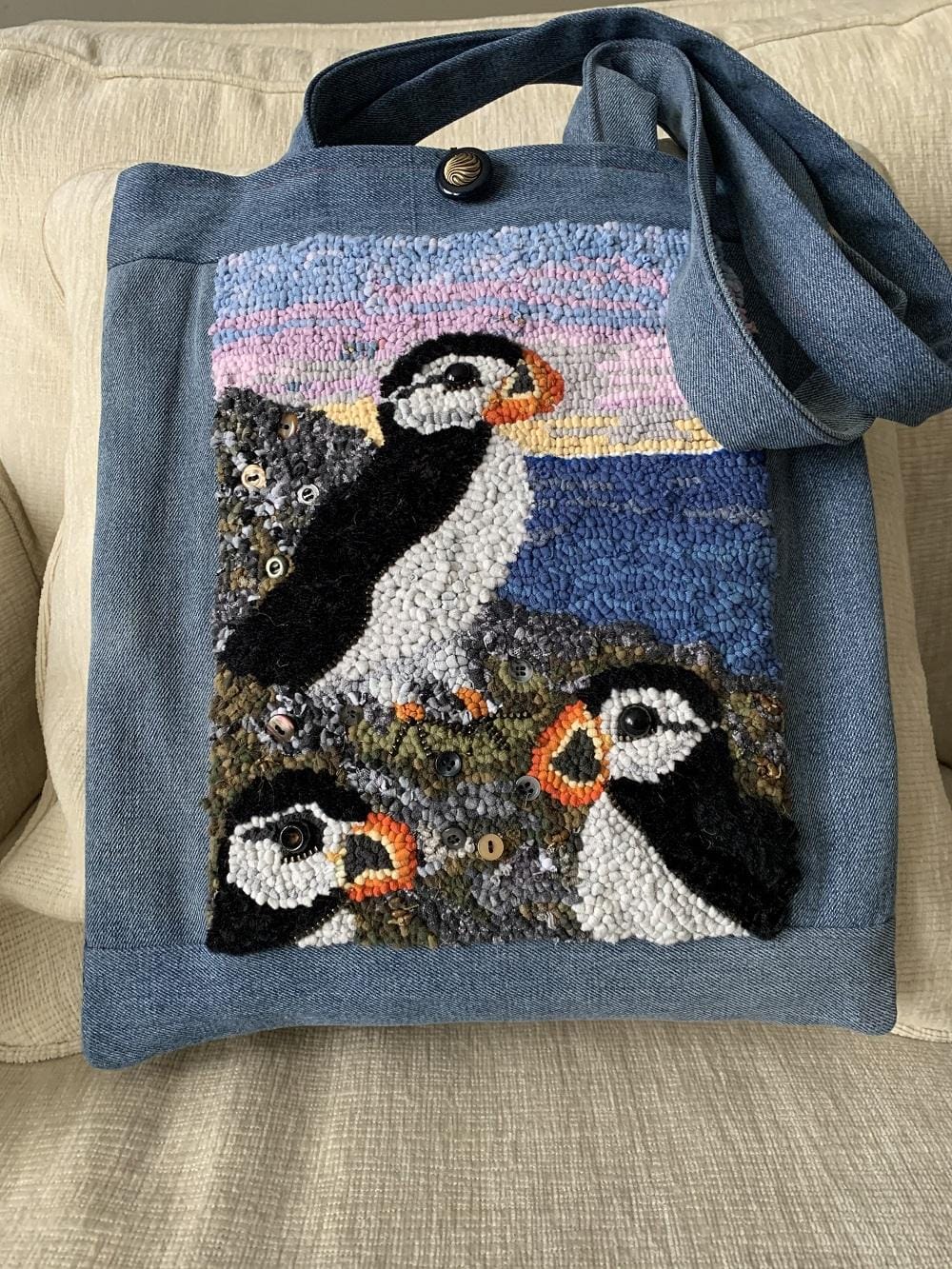
This means lots of folks today are using quality yarn instead of household scraps. Many artists are hand-dyeing their wool with natural botanicals. The mats of yesteryear have evolved into wall hangings, mittens, pillows and floor coverings. Some artists mix their textile arts, using other techniques combined with rug hooking.
One of my favourite local artists is Molly White. She’s the one who sold me the starter rug-hooking kit, distributed from her store, Molly Made, located in Woody Point, a small town near Gros Morne National Park. “I consider rug hooking to be a living art form,” says White. She mixes her rugs with other textile arts, fabrics and even found objects. Although her methods are not traditional—she prefers to use pantyhose instead of yarn or scrap fabrics because she believes it creates a finer line—she also experiments with texture. “Actually, there’s a huge difference between what I produce commercially and what I produce creatively. For my kits, I draw what people see in Newfoundland, familiar scenes, but for myself, I like to comb the shores and incorporate shells and driftwood into my pieces,” she says.
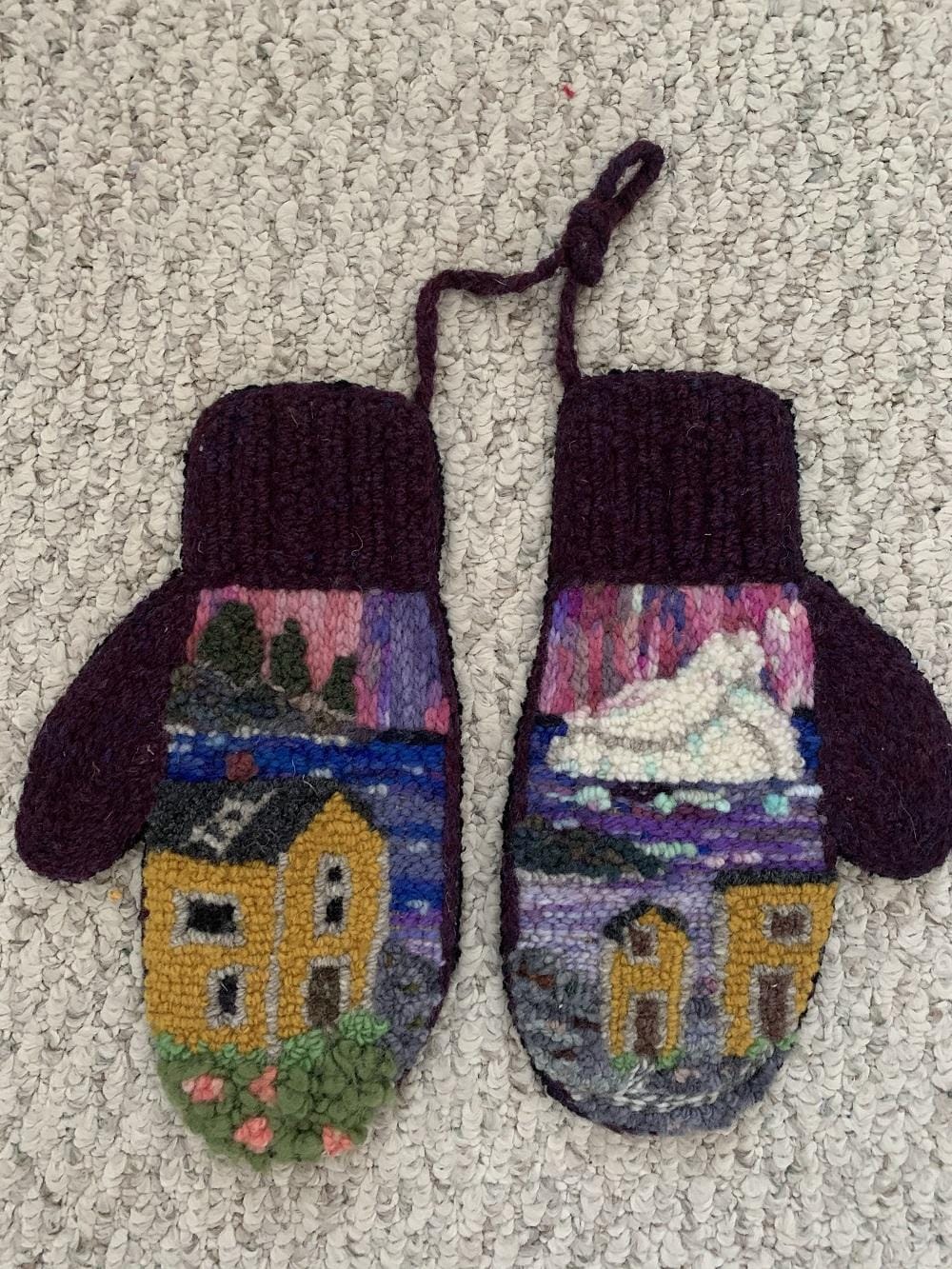
Glavine and White both work full time as artists—teaching, designing kits and producing commercial pieces. They are also both huge promoters of other artists in their community. White is quick to sing the praises of Deanne Fitzpatrick, a celebrated textile artist and owner of the Deanne Fitzpatrick Studio in Nova Scotia. “Deanne is originally from Placenta [Newfoundland], and her style is inspiring and bright,” says White. Meanwhile, Glavine mentions Joan Foster (one of the founding members of the guild) as both an outstanding artist and a person who has strived to preserve the history of rug hooking in Newfoundland and Labrador.
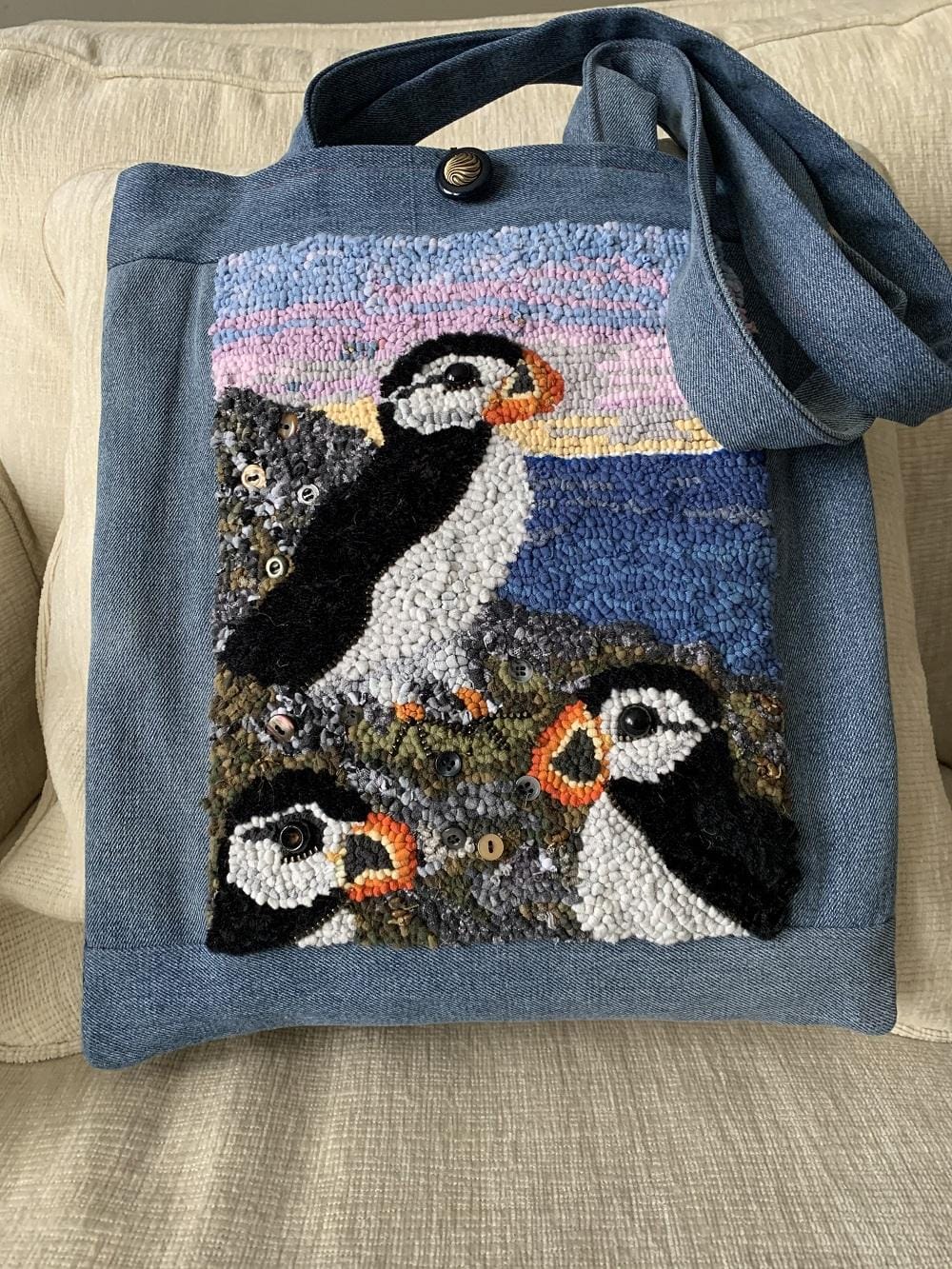
So, what if you’re interested in rug hooking but you don’t feel like an artist in any way? At this, Glavine pipes up. “You don’t need to draw! If you want to do your own patterns, you just need to be able to draw basic outlines of shape,” she says.
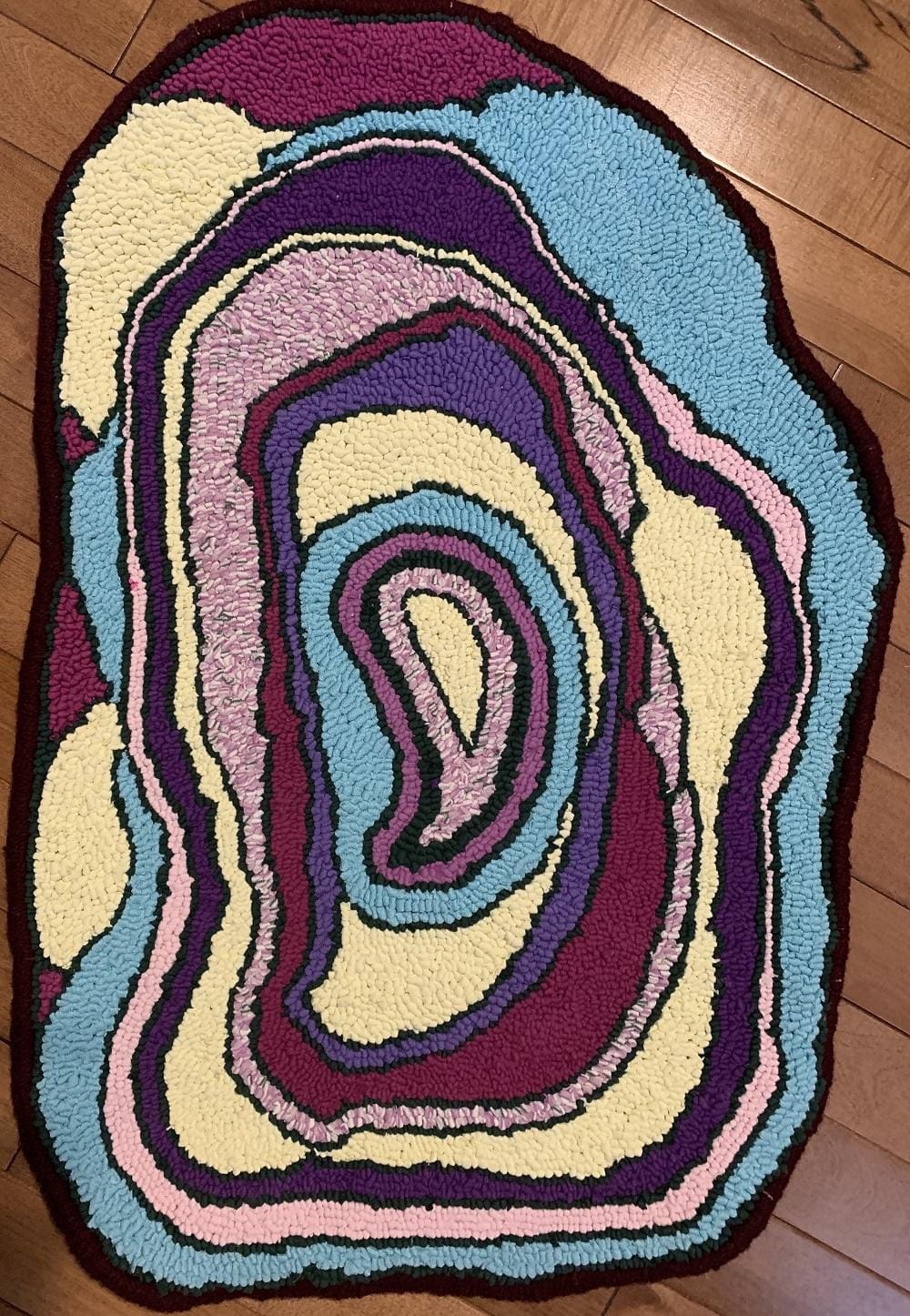
When I ask both ladies what rug hooking has brought to their lives, they each give curiously similar answers. “The biggest gift it has given me is a sense of soothing and calm,” shares White. Glavine agrees: “Folks always say, ‘You must need some patience for that.’ I tell them, ‘No. Rug hooking gives me patience.’ It helps me practice patience.”
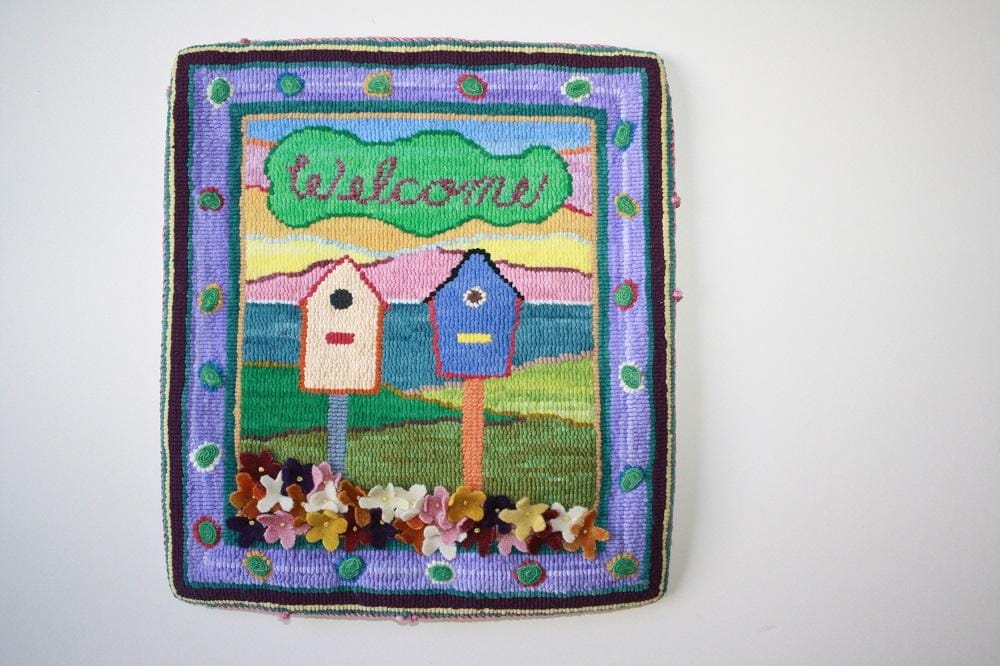
As for myself, I’m planning to stick with my new rug-hooking hobby. After all, practicing patience sounds like something that could come in handy in these cold winter months.
Commercial art and patterns by White.
All photos are property of Molly White
AMANDA BULMAN is a chef, writer, filmmaker and standup comic from Prince Edward Island. Her first cookbook will be released sometime next year, but she isn’t allowed to say too much more because there are
still some pesky contractual details to be worked out. She lives in colourful St. John’s, Newfoundland, with her husband and a rascally basset hound named Gabby. You can follow her adventures on Instagram
@amandabulman1.

